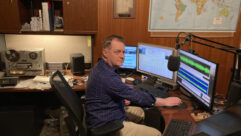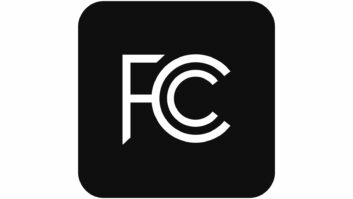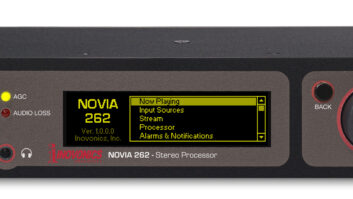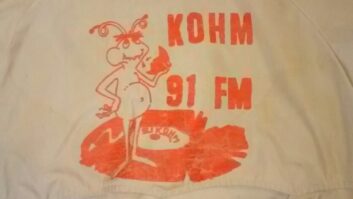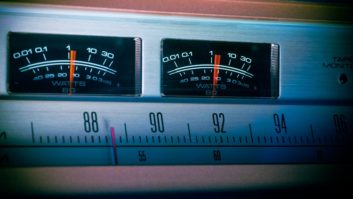Ted Schober, a consulting engineer running Radiotechniques Engineering, has added his support for Kintronic Labs’ pitch to the FCC on AM revitalization. Schober has sent his own letter supporting Kintronic and adding his own elaborations.
He emphasizes that many legacy regulations hamstring AM while needed regulations such as RF protection are not forthcoming.
Here is the full letter.
Dear Commissioners:
I am writing to heartily endorse most of Mr. Tom King’s open letter to broadcasters.
In his section 1, Tom correctly points out that the power distribution industry is a particular villain to AM reception. The noise from faulty power distribution equipment is an extremely serious problem for AM broadcasters, and although there are FCC regulations on the books, they are not effectively enforced.
Part of the problem is that it is nearly impossible for a station to notify the appropriate party in the utility to have the problem corrected. Even when notified, the problem is not promptly corrected. A centralized website for stations (and listeners) to report power line noise to the utilities, where the complainant would enter the pole number and/or geographic coordinates. The website would automatically notify the appropriate utility. The utility would then be required to update the progress in resolving the complaint within a short time, and updates on a daily(?) basis thereafter until the problem is resolved. Utilities failing to resolve problems or update the case would be fined.
The power companies are not the only infrastructure provider who violate FCC Part 15 standards. One of the most pernicious is the manufacture and installation of noisy LED traffic control lights. These devices are installed in locations at which AM stations are most vulnerable — where cars are stopped at these very traffic control lights. A listener who hears a buzz from a power line will drive away from the spot in a short time, but a listener hearing a whine from a switching LED controller supply harmonic will be abused for at least 30 seconds at a time.
Mr. King’s Item 2 is an important step toward improving AM, particularly in AM receiver quality. I have reservations about C-QUAM technology today, as I believe the only chip still available for receivers is the MC13028AD which draws 11 mA which is unacceptable for battery powered radios, and the smallest “D” package is too large for compact receivers.
I am also concerned that the cost factors for analog methods of variable bandwidth receivers will simply mean that manufacturers will delete the AM section of the radio.
Better would be to require that future radios be capable of automatically decoding all AM, FM, HD Radio and DRM systems, which could include C-QUAM.
There may be legal difficulties in mandating that receiver manufacturers include proprietary technologies such as HD Radio and C-Quam. Receivers that are field upgradable could have extra cost software “plug-ins” that could be aftermarket installed.
Variable bandwidth is a function easily and cheaply incorporated in software defined receivers. There are now chips available from several manufacturers which can achieve this, along with low power consumption.
AMAX technology was, in my opinion, an important boat that AM broadcasters missed. It could easily be incorporated into software defined receivers, however. I think analog implementation is a lost cause, at this date.
A critical change in FCC rules that will permit better receivers to be manufactured is to deauthorize AM hybrid HD-Radio. This technology is an anathema to full-fidelity AM radio reception. It is impossible to manufacture a radio with greater than 4.5 kHz audio bandwidth that will accommodate a second adjacent hybrid HD Radio station with a nearby service area, and difficult to achieve even 3.5 kHz audio bandwidth while rejecting a neighboring AM hybrid HD Radio station. The AM hybrid HD Radio system requires limiting the AM portion of the station transmission system to 5 kHz, which I agree with Mr. King is inadequate for listener acceptance on a quality receiver.
Mr. King’s third point is critical, when coupled with the authorization of low efficiency antennas. Synchronous boosters may be the single most powerful tool that AM broadcasters can have, provided that implementation can be of low enough cost.
I have been investigating the concept of low power (1–50 watt ERP) synchronous boosters for rooftop installation, not exceeding 30–40 feet in height. These antennas will provide strong signals for only a short range (1–3 miles) in urban areas to fill in to overcome noise, and to provide night signals in critical areas, while having only minimal interference potential to other stations. These synchronous boosters will be useful for AM operation, but will be much more effective for digital-only medium-wave broadcasting.
Mr. King’s proposals for more effective receivers are all excellent, provided that the cost of implementation does not preclude the inclusion of an AM receiver in the radio at all.
An essential aspect of automotive radios is that the sensitivity specification must be “as installed in the car” with all automotive systems operating — computers, fuel pumps, windshield wipers, etc. Autos and trucks should be required to accommodate AM reception within the vehicle (in terms of vehicle developed electronic noise) I have driven behind and alongside many long haul trucks which generate radio frequency noise that blocks strong AM stations for several hundred feet from the truck. In traffic, this noise assures that AM listeners will tune away.
Last month BMW announced that it was deciding not to put AM radios in its electric i3 auto because the electronics make too much noise. This noise will propagate to other cars in the traffic stream, and must be properly shielded and filtered. Even if they don’t put an AM radio in the car, they need to protect the other cars on the road from the interference.
The noise issues in the medium-wave band must be dealt with independent of migration to digital transmission technologies. Digital technologies may be more resilient in a noisy environment, but no technology can measure up to the assault on this band from noncompliant RF noise-generating devices.
Mr. King’s letter brings out critical issues that face radio broadcasting: Noise and poor receivers are destroying AM radio. His comments are spot on: AM radio needs protection from noise. Medium-wave broadcasting needs good receivers with high performance. AM radio needs the regulatory room to innovate.
I don’t know if the FCC has authority to regulate the performance of broadcast receivers, but that may well be a route to change the face of broadcasting for the better. I believe that software or firmware defined receivers is the direction for all new receiver designs. Mandating that digital receivers are “open” and can be field upgraded to implement new modulation systems and standards is very important. This way it will be possible for receivers manufactured in the near future to stay current as improved codecs, modulation schemes, content delivery systems, etc. are improved and implemented.
As a commenter in the AM rulemaking, I now better see that removal of many regulations are needed to allow medium-wave broadcasting the ability to adjust for current conditions. Little incremental changes, like eliminating the noxious “ratchet rule” are inadequate to breathe new life into the senior broadcasting medium.
Lifting regulatory burdens, such as exempting AM radio from the “Rural Radio Service” regulation, eliminating or modifying multiple local ownership restrictions for AM owners, eliminating principal community coverage at night, permitting experimental digital operations, eliminating AM main studio rules, permitting antennas with low efficiency, raising the protected contours, opening the expanded band for digital only operations, relaxing critical hours protection (and extending that protection to all stations), reforming PSSA and PSRA to remove the 500 watt limitation and other changes, eliminating the secondary service area for Class A Stations, 1000 watt maximum night power for Class D stations, increased day power for Class C stations and expanded band stations, temporary exemption from FCC regulatory fees.
All these regulatory items are within the purview of the FCC to implement. Enforcement and endorsement of a system to report and track Part 15 violations that impact broadcasters are within the FCC’s grasp. What AM broadcasters need is not band-aids, but real regulatory relief.
Respectfully submitted,
Edward (Ted) Schober, PE
Consulting Engineer
Radiotechniques Engineering




